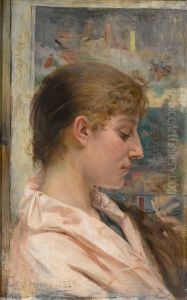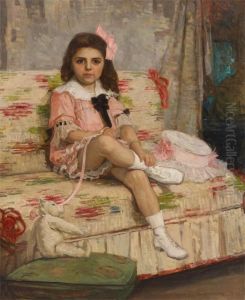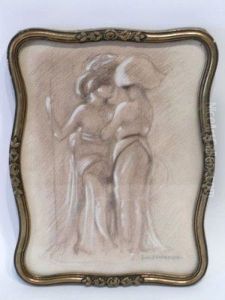Emile Edouard Berchmans Paintings
Emile Edouard Berchmans was a Belgian artist born on August 3, 1867, in Jupille-sur-Meuse, which is now a part of the city of Liège, Belgium. Berchmans showed an early interest in the arts, and his initial training began at the Royal Academy of Fine Arts in Liège, where he studied under the guidance of various artists including Adrien de Witte and Évariste Carpentier. His education continued in Paris, which was the epicenter of the art world during the late 19th century. There, he was exposed to the burgeoning artistic movements of the time, which would go on to influence his style and artistic approach.
Throughout his career, Berchmans was known for his versatility across different mediums, including painting, graphic arts, and book illustrations. His artistic style was characterized by a blend of realism and symbolism, and he often depicted subjects such as landscapes, portraits, and genre scenes with a subtle yet poignant expressiveness. He was also recognized for his posters and decorative works, which reflected the Art Nouveau movement's influence on his designs. Art Nouveau was characterized by its use of long, flowing lines and curves inspired by natural forms, and Berchmans' work from this period embodies these stylistic tendencies.
In addition to his work as an artist, Berchmans was actively involved in the artistic community of his time. He was a member of several artistic circles and contributed to exhibitions and artistic publications. His works were showcased in various exhibitions, and he gained a fair amount of recognition for his contributions to the visual arts.
Emile Edouard Berchmans continued to work and contribute to the art world throughout his life until his death on March 15, 1947, in Liège. Although he may not be as widely recognized as some of his contemporaries, his work remains a testament to the diverse artistic currents that flowed through Europe at the turn of the 20th century and the rich cultural milieu in which he practiced his craft.


